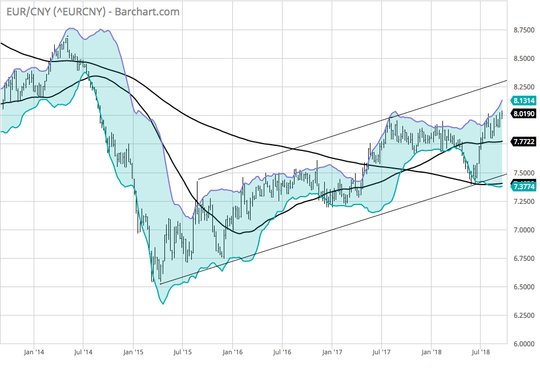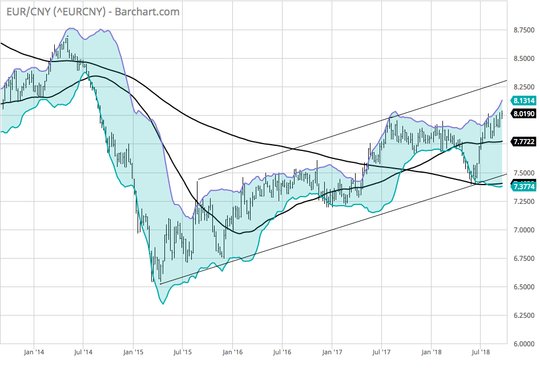The muted reaction of markets to the expected Trump escalation of trade measures on China reflects less calm and more hope that negotiations follow and lead to a deal. The tiered roll-out of new US tariffs on Chinese goods confirms the skirmishes leading to a larger battle but the 10% rate is lower and any 25% increase is months away, allowing time for a deal. The bounce back in Asia shares and CNY reflect that most of this isn’t news but as expected. China also didn’t immediately retaliate though it did vow to react later.
The Chinese are stoically planning more domestic stimulus with more stockpiling to wait it out. The WSJ highlights the unintended consequences of this mess – as the process helps China be more competitive.
However, today’s muted reactions have no voice in future risks and as such the relief rally may be less convincing. The economic battles between the US and China have a larger political backdrop as China uses this as an opportunity to win over hearts and minds with Europe clearly at the center. The battle lines for this war are growing not shrinking. For markets today, there was little other news and the muted reactions in equities helped but emerging markets are less obviously joining the party and commodity currencies like AUD and CAD are bouncing a bit but not out of their bearish range. As for the key on the day, pay attention to EUR/CNY – its flashing red for USD in general as EUR breaks 8 and opens 8.25 targets.
The Chinese maybe in the process of looking to replace US with Europe in a more meaningful way and this means capital flows despite political risks or ECB doubts.

Question for the Day:Does oil tell us something today? The rally up in oil in Europe was notable – 1.7% up in Brent from the open as Saudi comments suggest they are comfortable with oil over $80. Perhaps this reflects their inability to counter the Iran sanction induced supply hit and the $70-$80 range myth. Perhaps it reflects a shift on global growth as US and China tariffs haven’t hit GDP or orders as much as feared. Perhaps oil is merely reflecting the USD turndown and more depreciation risks as OPEC points toward Beijing rather than Washington. Markets need to pay attention to Brent as this $80 level looks like a breakout zone for the coiled spring risk of $87bbl. If oil prices rise, room for both ECB and FOMC to pause becomes less clear and rate normalization speeds up eventually hurting growth and stocks.

What Happened?














Leave A Comment